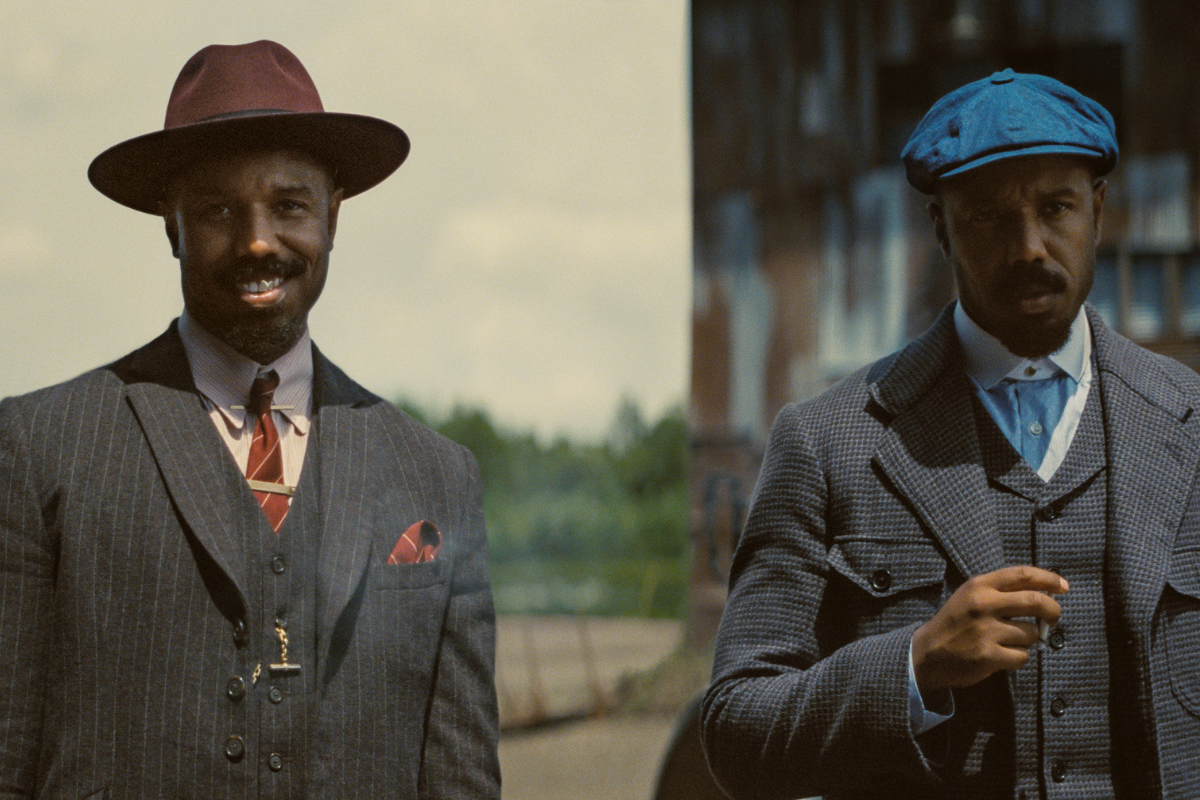Why Spec Scripts Fail: Shooting Scripts vs. Spec Scripts
Stewart Farquhar explores reasons Why Spec Scripts Fail. He compares shooting scripts vs. spec scripts and covers conventions vs. rules.
Stewart Farquhar holds Screenwriting and Advanced Screenwriting certificates from the Professional Program at The UCLA School of Theatre Film and Television. Stewart has analyzed over 4,000 scripts for private and studio clients.
Shooting vs. Spec. A conundrum. There is a lot of gnashing of teeth by a variety of well-meaning critics and pundits when it comes to what constitutes a shooting vs. spec script format. It’s enough to drive an emerging writer to drink.
First: There are no readers, analysts, or writing coaches, that I am aware of, who create any “rules.”
Second: Their responsibility and mission is to help writers abide by current industry expectations and,
Third: Requirements for unsolicited scripts may vary slightly among authors, schools, agencies, production companies, and studios.
However, there is one requirement all agree on; “DON’T BORE ME.” After that comes the page format. Readers and development execs who read expect to see certain components for a spec script in a definite style on the page. Lean is in, pedantic and descriptive prose is out. No technical direction and everything shorter (including the script).
The seminal and up-to-date spec script reference that has been the go-to source for over twenty years is David Trottier’s The Screenwriter’s Bible (6th edition). No other text, contest or course addresses in detail what is expected from a writer working to break into the industry via the traditional route. The major writing software is set up for production and / or shooting scripts right out of the box. The good news is that you can customize every aspect of the format. NOT a good idea to play with the margins.
Production and shooting scripts have a myriad of instructions on the page. For example it is not uncommon to find some if not all of the following in a shooting script: ANGLE ON, ANOTHER ANGLE, CLOSE ON, CRANE SHOT, DOLLY WITH, ECU, PAN, POV, PULL BACK TO REVEAL, TRUCK, ZIP PAN, WE SEE, WE HEAR, ZOOM, etc. in addition to editing directions: CUT TO, DISSOLVE TO, IRIS, WIPE. Unless it is absolutely necessary for the story, and then only sparingly, do not include any of the editing directions. It will do at least two things that will not endear to the other trades, 1) slow down the read and; 2) rank you as an amateur writer. Your goal in a spec script is to dazzle a READER with your story teller skill not to direct and /or edit a film.
As we have discussed before, a script with heavy inked pages will more than likely be tossed by page five. If not tossed then it will be skimmed. Either scenario spells death to your hard work. Incorrect title pages with copyright and registration information scream new and insecure writer. True, shooting and production scripts may have it on the left bottom and the name and/or contact info on the right bottom of the title page. That is not spec script format. If you pretend you are a production company it won’t help unless you have caché. Understand that with technology today your credentials will be checked. Also, leave the date(s) off the title page for obvious reasons (do you really want people to know how long you have tried to sell this script). Now, before the flames roll in ask yourself this question, “Until you are in the system why try to change it”? A reader is only the promulgator not the originator of these “rules.” As I said before there are really no rules, just filters to manage the number of submissions.
In today’s market, there is a continued move toward a leaner, shorter screenplay that does not include technical instructions to other professionals. This requires more skill on the part of the writer to show vs. tell their story in an economical way with shorter dialogue, succinct description, and an abundance of white space. To achieve this goal make the thesaurus your best friend.
Earlier, I noted that the industry standard screenwriting software programs are not set up for a spec writer. As such, you have to disable each instance of “CONTINUED”, “(CONT)”, “(MORE)” and scene numbers in your scripts. These will all get added back as your story progresses up its production and shooting journey. You do want it to progress. Correct?
I can’t impress strong enough that your only audience with your spec script is the first level reader. If you include any of these advisories all you do is remove the reader from your story. It is possible that some may not care, however, there are more who have been told to use any occurrence of these items as a justification to discard the script. Impress the reader with your story telling ability as opposed to any skills you may have as a filmmaker, cinematographer or editor. Clever writing or the skilled use of your thesaurus will impress more than the inclusion of explicit script instructions. Any “technical direction” should evolve and be obvious through your skill as a scribe and therefore not require a “call-out”. This is especially true when you include actor instructions in dialogue.
In a previous article about Wrileys, I went into some detail as to why parentheses should be used sparingly in a spec script. To recap: If the subtext is unclear, the intended recipient of the dialogue is ambiguous or if there is a need to change a character’s vocal tone or volume are what I said were the valid reasons for their use in a spec script. Today, and because the younger execs read less, in the first few pages and IF it moves the scene along an OCCASIONAL 2-3 words of action under the character name has crept into the spec script style. Be very careful. Know your audience. The professional reader reads everything and placing action in parentheses slows down their read. Agency and studio readers may have to read and report on 2-3 scripts per working day. In some environments it can be up to five reads and reports a working day. They get irritated when you slow them down.
Don’t be guided by the majority of online scripts. With the exception of the 2nd revision of Groundhog Day by Harold Ramis from the original spec by Danny Rubin, most scripts are production or shooting style. Even that style of January 1992 is frowned upon by todays spec standards because of all the CUT TOs and action in parentheses. At the time Ramis had written or collaborated on such scripts as Animal House, Meatballs, Stripes and Ghostbusters I & II. He had a history. He was NOT a spec writer. As I said, the accepted format is under a constant evolution. Remain conservative. Leave the direction and edit style to the professionals.
Again, it is NOT in your best interest to use the online scripts as a format guide. Instead, use them as examples of how to or, in some cases, how NOT to tell a story.
Script length has changed from the days of The Windjammerbook by A.L. Villiers, adaptation & screenplay by James l. Shute (1958 @ 142 min) or the original script for Waterworld by Peter Rader and David Twohy (1995 @ 135 min or 176 min director’s cut and yes, there was a 1991 2nd Revision polish @ 98 pages). Spec scripts (if we assume the industry standard one minute per page) are now anywhere from 95-110 pages with many coming in at the lower end. Length has become genre specific. Comedies that used to be anywhere from 100-103 pages have now shrunk down to approximately 98 pages. Dramas that were once 105-110 pages are now expected to be no more than 102 – 103 pages. A writer can accomplish this reduction when he or she keeps narrative / description / dialogue to four lines or less. Remove the Detail / Detailitus. Longtime Chair of UCLA’s graduate program in screenwriting, Richard Walter has a saying: “Save it for the novel” (S.I.F.T.N.).
For dialogue, 3 lines or less has become what entry level readers now expect. Action or description is now 3-4 lines. I teach my clients and students to eliminate “orphan words” in each paragraph. Are there exceptions? Of course. Until you become the “go to” writer give the readers what they expect.
I highly recommend that you stifle your desire to emulate Shane Black or Quinton Tarantino in an attempt to create a chit-chat dialogue style with the reader. That is their style. They own it. Let the emotion in your script and your unique writing style grab the reader. Develop the enviable skill of the minimalist artist when you paint your story with words. A minimalist encourages the viewer / reader / listener (in the case of music) to engage with their own recollections or experiences and as such become a part of the work. Your ultimate goal as a scribe is to grab the reader by the sensitive parts and have s/he beg for more. By all means create a script that was fun for you to write and is easy for the reader to read and recommend. This is not the time in your spec writer career to stick your nose in the script.
Keep in mind that your audience is, “The Reader.” Concentrate on making your script easy to read. Stay with today’s conventions. However, don’t get hung up on conventions as “rules”, format, page count, what happens or should happen on what page or anything else. Instead, concentrate on the creation of a story that compels the reader to become so emotionally involved and invested in your characters they need to turn the page to arrive at the anticipated / expected resolution. All the while you minimize such editorial distractions as “we see”, “we hear” or “beat.” That last one is best left to the musicians. The simple fact is that spec writers without a résumé are unlikely to get away with such a faux pas. Regardless of the source, “we see”, “we hear” and “beat” are prime examples of a lazy screenwriter. The simple fact is that a reader only sees words on a page and feels the emotion they create. When your script garners you the big bucks you or a polish writer can re-write however you want to.
One more thought, make sure the logic of your story remains true to the opening promise. It is amazing how many spec scripts never get to the point. The fact that it looks right on the page with a lot of white space and the story is logical and compelling helps move a reader along. As a writer it is not your job to do everyone else’s job. A spec script writer must save some creative details for the other professionals.
If what you write is never going to occur again in your story, cut it out. In other words, if a scene doesn't foreshadow the next scene what results is a story with no narrative drive. No drive equals no reason to turn the page unless a reader has accepted a contract to do so. Demonstrate that you are a minimalist. Remember, your job is to craft an “Invitation To Participate” in the visualization of your story, not to create a collection of narrative prose.
In this episode we covered the following in no particular order:
- “Rules” are not from Readers, Analysts or Coaches
- Don’t bore me
- Lean content, format and length is in
- Use the source, The Screenwriter’s Bible
- Show vs. tell other trades what to do
- Don’t mark yourself as an amateur
- Dazzle the reader
- Be a “secure” writer
- Embrace your “best friend”, a thesaurus
- Write with your audience in mind
- Imply technical / artistic direction through creative writing
- Revisit the “Wrylies” (actors hate them)
- Don’t slow the reader
- With a history you too can break rules
- Script length changes
- I. F. T.N.
- Script element length
- Don’t copy shooting script format, study them for story
- Be a minimalist
- Tell a compelling story
- Eliminate / minimize editorial distractions
- Your job is to craft an invitation
- More articles by Stewart Farquhar
- Meet the Reader: 12 Signs of a Promising Spec Script
- Ask the Expert: How Do I Get My Material Seen?
Get shooting scripts from The Writers Store, including ones like
The Shawshank Redemption
Stewart Farquhar holds Screenwriting and Advanced Screenwriting certificates from the Professional Program at The UCLA School of Theatre Film and Television. Stewart has analyzed over 10,000 scripts for private, agency and studio clients. He is a produced playwright, active screenwriter and an in demand lecturer. He presents as a guest lecturer in Master’s Level screenwriting programs at UC Berkeley and Loyola Marymount University. He has been a final story analyst for both Slamdance and scripts headed to Cannes for funding. Visit Stewart's site TheReadersCompany.com and follow him on Twitter, Facebook, and LinkedIn. Email: stewart@thereaderscompany.com







